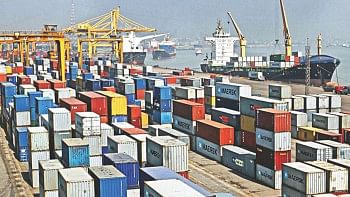Law of Maritime Boundary in the Bay of Bengal
UNDER the UN Convention of the Law of the Sea of 1982 (UNCLOS), a coastal state can claim jurisdiction of 12-miles territorial sea, 200 mile exclusive economic zone and an additional 150 miles of continental shelf over and above the 200 miles exclusive economic zone from a baseline which could be normal or straight baseline.
Bangladesh ratified the Convention in 2001, while India did it in 1995 and Myanmar in 1996. Accordingly, all three countries are bound by the provisions of the UNCLOS in delimiting the boundaries of territorial sea, exclusive economic zone and continental shelf. Besides UNCLOS, they are obliged to comply with international customary laws also.
The jurisdiction on the territorial sea of the state is three-dimensional and a state exercises full sovereignty on surface water, air and seabed, except the "innocent passage" of ships through territorial sea. The width of territorial sea, as distinct from inland waters, is 12- nautical miles from the baseline.
The jurisdiction on the economic exclusive zone (EEZ), which includes the seabed, is resource-oriented. This means that all living and non-living resources in the economic zone belong to the coastal state, which also has the sovereign rights to manage and conserve the resources within this area.
The jurisdiction on the continental shelf (seabed) is also resources-oriented. If the area of the continental shelf is found to be more than the area of the EEZ, then the coastal state can claim an additional 150 miles of sea bed, in addition to 200 miles economic zone (12 territorial sea + 188 miles of economic zone). That means that the continental shelf can extend to 350 miles from the baseline.
It is noted that the claim of the extra 150 miles of continental shelf by Bangladesh has to be submitted ordinarily within 10 years of the ratification of the UNCLOS to the UN Commission on the Limits of the Continental Shelf (CLCS), i.e. by 2011. It is reported that Bangladesh will be able to submit its claim by 2011
But the time limit of 10 years is not sacrosanct and can be extended by another 5 to 10 years by the CLCS. It is believed India was given another 5 years by the CLCS. Therefore, if Bangladesh cannot make a claim within 2011, it can ask for extra time.
Both India and Myanmar have submitted their claims of continental shelf beyond 200 miles to the CLCS. Bangladesh is reported to have submitted its objection to Myanmar's claim of continental shelf to the UN, and it is believed that it will also lodge an objection against India's claim as well.
Law under UNCLOS:
First, UNCLOS envisages a conclusive agreement between states on maritime boundary. This means that states are free to choose whatever means to resolve the maritime dispute on their own. But failing agreement between them, the Convention provides the method under which the maritime boundary is determined.
Article 15 of UNCLOS is applicable in delimiting territorial waters, in which case, failing agreement, an equidistant line from the baseline would be applicable unless special circumstances or historic title exist.
Although Article 15 mentions equidistance method in case of disagreement between states on delimitation of territorial waters, Articles 74 and 83 do not mention equidistance method in delimiting exclusive economic zone and continental shelf between states.
Both the Articles provide that Article 38 of the Statute of International Court Justice
(rules of international law) will apply to achieve "an equitable solution." The key words are "equitable solution," which stand for fair and just solution.
For Bangladesh, being adjacent (not opposite) to both India and Myanmar, the application of equidistance method for delimitation of exclusive economic zone and continental shelf does not achieve equitable solution as contemplated by UNCLOS.
To achieve an equitable solution, Bangladesh should get a fair share of the resources of the Bay of Bengal and must not be relegated to "a sea- locked state" by squeezing of Bangladesh's area from west and east by both India and Myanmar through employing the method of equidistance. This can be considered as unjust and unfair.
Furthermore, Bangladesh's concavity and heavily indented coastline, natural prolongation of its land territory to continental shelf, its scanty natural resources in proportion to the huge population, and the general orientation of the Bangladesh's territory (square in shape) are some of the factors to be considered in achieving equitable solution.
Another fact to be borne in mind is that the claim in the areas in the Bay of Bengal constitutes about 5-7% of India's maritime zones and 10-15% of Myanmar's, but Bangladesh's stake is 100%.
One of the features of UNCLOS is its provision for binding dispute settlement for peaceful resolution of maritime disputes between and among states.
In the above context, it is good to note that the government has decided to refer the disputes to arbitration under Part XV of UNCLOS, which, in my view, is the only alternative left for Bangladesh in case disagreement with India and Myanmar. Meanwhile, bilateral negotiations may continue to resolve the issue within the framework of UNCLOS.

 For all latest news, follow The Daily Star's Google News channel.
For all latest news, follow The Daily Star's Google News channel. 



Comments